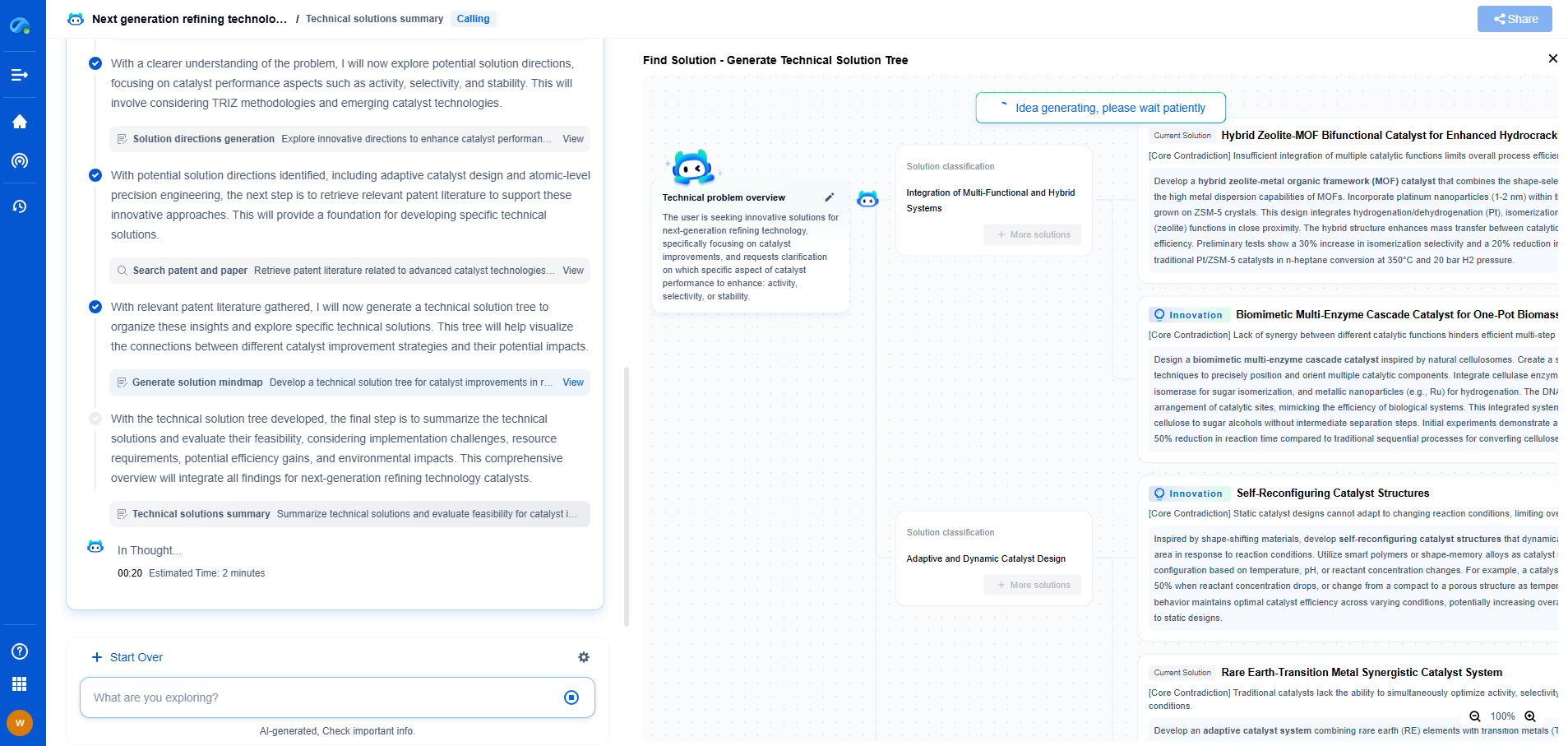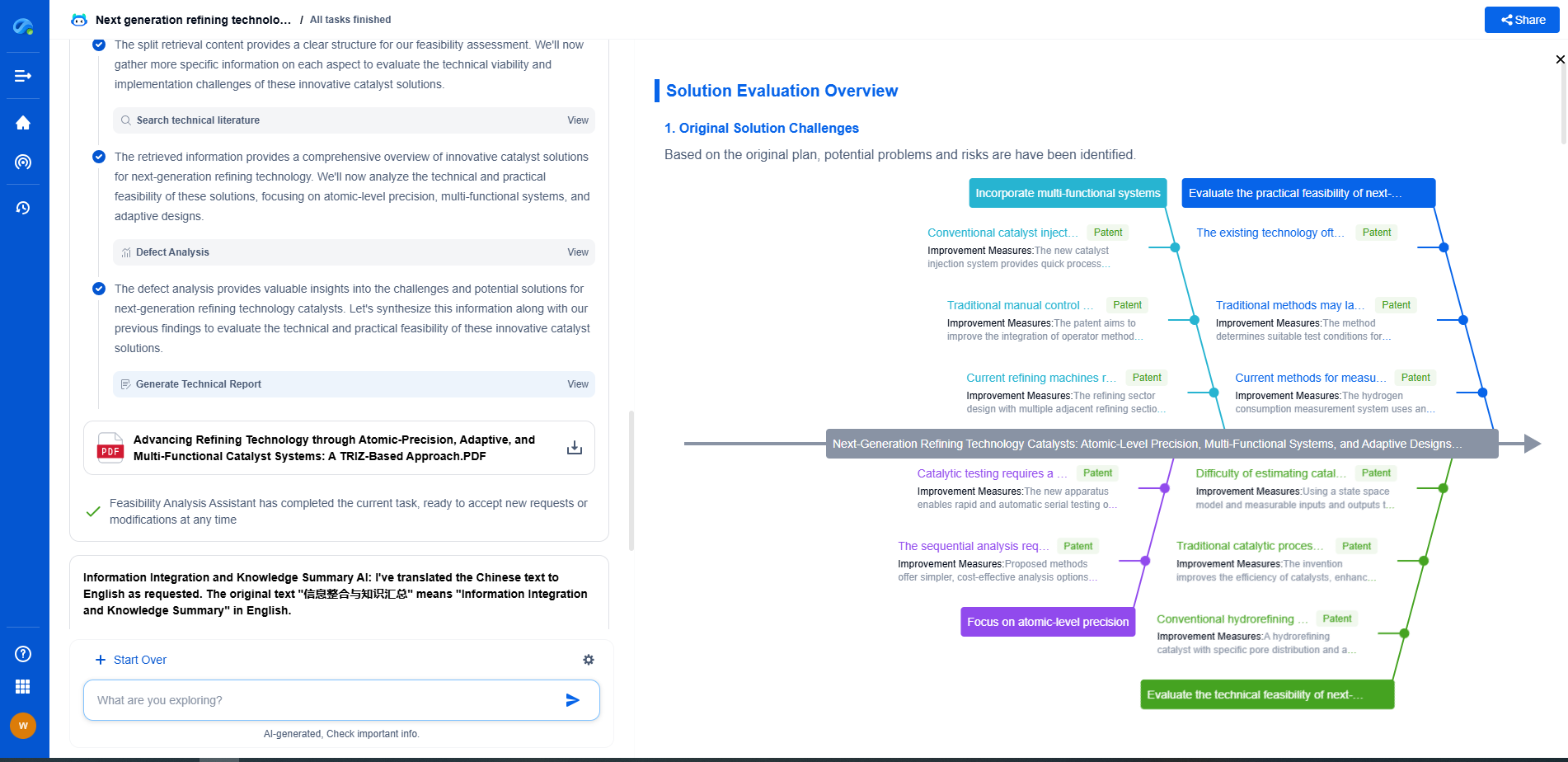How AI Enhances Power Quality Management in Microgrids
JUN 26, 2025 |
Understanding Power Quality in Microgrids
Power quality is a crucial aspect of microgrid management, encompassing factors such as voltage stability, frequency regulation, and harmonic distortion. Poor power quality can lead to inefficiencies, equipment damage, and system failures. Maintaining high power quality in microgrids is essential for their reliable operation, especially as they integrate renewable energy sources like solar and wind, which are inherently variable.
The Role of AI in Monitoring and Analysis
AI enhances power quality management by offering advanced monitoring and analytical capabilities. Traditional monitoring systems can be limited in their ability to process large volumes of data quickly. AI algorithms, particularly those involving machine learning, can analyze vast datasets in real-time, providing insights into power quality parameters and identifying patterns that may indicate issues.
Through continuous monitoring and analysis, AI systems can detect anomalies and predict potential power quality disturbances before they occur. This predictive capability allows for proactive management, reducing downtime and maintaining consistent power quality across the microgrid.
Optimizing Energy Distribution and Load Balancing
One of the significant challenges in maintaining power quality is ensuring balanced energy distribution. AI plays a pivotal role in optimizing load balancing by analyzing consumption patterns and adjusting energy distribution dynamically. Machine learning models can predict peak demand periods and redistribute energy loads accordingly, minimizing stress on the grid and preventing power quality degradation.
Furthermore, AI systems can coordinate the operation of various distributed energy resources (DERs) within a microgrid. By optimizing the use of solar panels, batteries, and other energy sources, AI ensures that power supply meets demand efficiently, contributing to improved power quality and reduced energy costs.
Enhancing Fault Detection and Response
AI technologies enhance fault detection and response in microgrids by enabling swift identification and isolation of faults. Advanced AI algorithms can pinpoint the location and nature of a fault with high accuracy, allowing for rapid corrective action. This capability is particularly valuable in maintaining system stability and preventing cascading failures that could compromise power quality.
Additionally, AI-powered systems can learn from historical fault data to improve future fault detection and response strategies. By continuously updating their knowledge base, these systems become more effective over time, enhancing the overall reliability and resilience of the microgrid.
Integrating Renewable Energy Sources
The integration of renewable energy sources presents unique challenges for power quality management. The intermittent nature of sources like solar and wind can lead to fluctuations in power quality. AI helps mitigate these challenges by predicting generation patterns and potential disruptions, allowing for better integration of renewables into the microgrid.
Through advanced forecasting techniques, AI systems can anticipate changes in weather conditions and adjust energy distribution in real-time. This proactive approach not only maintains power quality but also maximizes the utilization of renewable energy, supporting sustainability goals and reducing reliance on fossil fuels.
The Future of AI in Power Quality Management
As AI technology continues to evolve, its applications in power quality management within microgrids will expand further. Future advancements may include more sophisticated predictive models, enhanced integration with IoT devices for improved data collection, and the development of autonomous control systems that can manage microgrid operations with minimal human intervention.
The continued collaboration between AI researchers and energy professionals will be crucial in unlocking the full potential of AI in microgrids. By leveraging AI's capabilities, microgrid operators can ensure reliable, efficient, and sustainable energy solutions for communities around the world.
In conclusion, AI is transforming power quality management in microgrids by offering advanced monitoring, optimization, and fault management solutions. Its ability to enhance energy distribution, integrate renewables, and predict potential issues makes it an invaluable tool in the quest for reliable and efficient microgrid operations. As the technology advances, AI will play an increasingly vital role in shaping the future of energy management in microgrids.
Stay Ahead in Power Systems Innovation
From intelligent microgrids and energy storage integration to dynamic load balancing and DC-DC converter optimization, the power supply systems domain is rapidly evolving to meet the demands of electrification, decarbonization, and energy resilience.
In such a high-stakes environment, how can your R&D and patent strategy keep up?
Patsnap Eureka, our intelligent AI assistant built for R&D professionals in high-tech sectors, empowers you with real-time expert-level analysis, technology roadmap exploration, and strategic mapping of core patents—all within a seamless, user-friendly interface.
👉 Experience how Patsnap Eureka can supercharge your workflow in power systems R&D and IP analysis. Request a live demo or start your trial today.
- R&D
- Intellectual Property
- Life Sciences
- Materials
- Tech Scout
- Unparalleled Data Quality
- Higher Quality Content
- 60% Fewer Hallucinations
Browse by: Latest US Patents, China's latest patents, Technical Efficacy Thesaurus, Application Domain, Technology Topic, Popular Technical Reports.
© 2025 PatSnap. All rights reserved.Legal|Privacy policy|Modern Slavery Act Transparency Statement|Sitemap|About US| Contact US: help@patsnap.com

